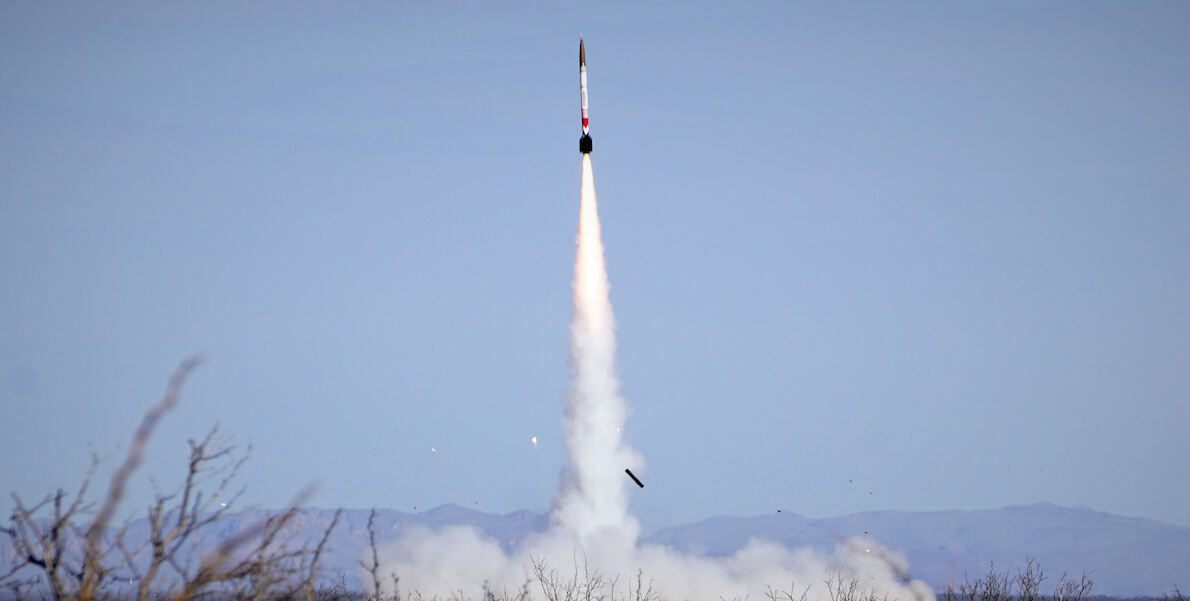
Launch of Fathom II on March 4, 2017. At 144,00 ft Fathom II was the highest altitude for a rocket entirely designed and manufactured by students
Just over a week ago, over 70 members of the USC Rocket Propulsion Lab (RPL) trekked to Spaceport America to launch Fathom II, a rocket designed and manufactured entirely by USC students.
The March 4, 2017 launch was years in the making and built upon the knowledge passed down since the Rocket Propulsion Lab was founded in 2004. A student-run undergraduate lab, RPL designs and tests experimental rocketry and propulsion hardware. RPL has been fertile ground for careers in the commercial space industry at companies such as SpaceX and Blue Origin.
The path to the flight of Fathom II was not easy. Fathom II took approximately three months to design and manufacture. Students don’t merely design the rocket for flight, they also design and integrate a system of avionics to regularly communicate with those back on the ground.
After a day-long caravan to New Mexico’s Spaceport—the same launch location used by commercial space company, Virgin Galactic—the students tested and retested avionics, the recovery system and the launch pad setup.
Why do these students do all this extra-curricular work? For the love of space. Before and after Fathom II launched on a Saturday morning in the cold desert, the students huddled and cheered, “Space! Space! Space!” as their rallying cry.
This particular launch was not a planned “spaceshot” to get to the Karman line—the line of demarcation between space and the earth’s atmosphere—but its goal was still ambitious. The goal of the vehicle was to reach 180,000 feet, more than half way to the lab’s ultimate goal of reaching space. RPL’s previous record was 63,000 feet.
Furthermore, as the space race between campus-based rocket clubs heats up, the criteria for success was strict: students must design, manufacture, launch and recover their rocket intact.
When Fathom II launched at 9:20 AM, it shattered the cinder blocks on the launchpad. The students were first silent as they awaited updates from the avionics and launch operations team. Fathom II traveled as fast as four times the speed of sound and then disappeared from view. After coming down under a parachute, Fathom II “pinged” the students, letting them know its precise location. It was recovered intact 6.8 miles away from the launchpad. Later confirmed to have reached an altitude of 144,000 feet, it was the most successful launch in RPL’s history.
Fathom II’s altitude tops the records held by similar groups like Delft Aerospace Rocket Engineering at 70,397 feet, and the University of Stuttgart HyEnD team at 98,400 feet. While other university groups have reached higher altitudes using mixtures of professionally-made and student-made components, RPL’s new record is believed to be the highest altitude achieved worldwide for a vehicle designed and manufactured entirely by students.
In his celebratory email to the RPL students, RPL Chief Engineer Carter Allen said, “The goal of this mission was to qualify and test our systems before moving on to our next space shot. You know what that means? Time to move on to space.”
Upon being notified of the students’ success, USC Viterbi Dean Yannis C. Yortsos said, “The USC RPL student team continues to amaze us with their ingenuity, energy and ambition. This launch success is another milestone in their development and a great promise for the key role they will surely play in space travel and exploration.”
Published on March 16th, 2017
Last updated on March 27th, 2017







